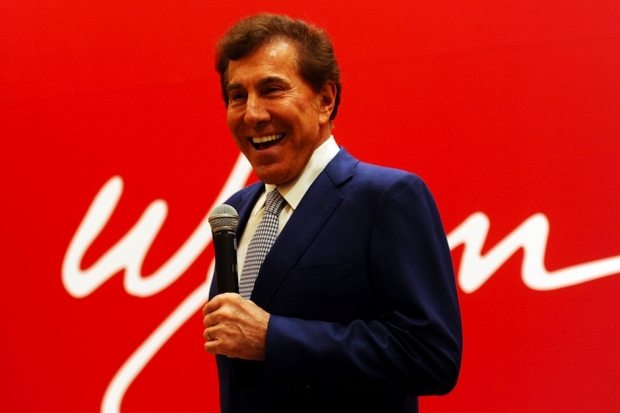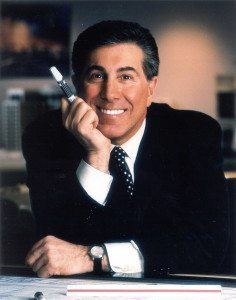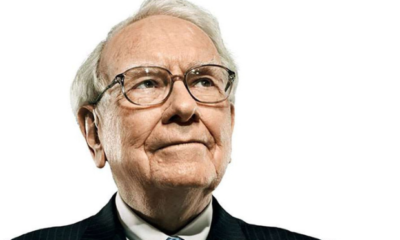Entrepreneurs
Why Steve Wynn Is So Successful

Without Steve Wynn Las Vegas wouldn’t be be the place that it is today. His vision, determination and commitment to quality continues to drive the world’s most famous party city.
Steve Wynn played a very important role in the development of the Las Vegas Strip with his companies building or remodelling some of the most recognized resorts on the planet including the Bellagio, The Mirage, Treasure Island and the Wynn.
Wynn’s love of the luxurious coupled with his progressive, entrepreneurial spirit have allowed him to become a Billionaire whilst providing fun and entertainment to millions.
The Early Days
 Steve Wynn took over his father’s Bingo Parlor in 1963 after his father died of complications following a heart attack. The business was struggling and $350,000 in debt. Wynn built relationships with old customers and saved the business whilst his wife, Elaine oversaw the finances. The great work that he did after taking over the business allowed Wynn to pay off his father’s debts.
Steve Wynn took over his father’s Bingo Parlor in 1963 after his father died of complications following a heart attack. The business was struggling and $350,000 in debt. Wynn built relationships with old customers and saved the business whilst his wife, Elaine oversaw the finances. The great work that he did after taking over the business allowed Wynn to pay off his father’s debts.
Through the contacts that he made in the 1960s, Wynn was able to collaborate with some of his father’s old friends in order to make a three per cent investment in the Frontier Hotel on the Las Vegas Strip, as well as borrowing $30,000 from a Las Vegas Bank to purchase another two percent. His stake in the Hotel allowed him to qualify for a portion of the Frontier’s profits that were made from gambling. It was through Wynn’s experiences watching his father and others lose money that he made the observation; “if you want to make money from a casino, you have to own it.”
Not showing any signs of slowing down, Wynn purchased, renovated and developed the Golden Nugget. He transformed it from gambling hall into a resort hotel and casino with massive success and began to attract a higher level of client to downtown Las Vegas. Frank Sinatra became the headline act at the Golden Nugget and Wynn still holds a long standing relationship with the Sinatra family with a restaurant (Sinatra) named after Frank in his hotel at Encore.
“Other people’s successes are good news – for them and for you. Good for you because they show you a way to go.” – Steve Wynn
Conquering the Strip
 The Mirage was Wynn’s first major stamp on the Las Vegas strip. The hotel that opened in 1989 comes complete with its very own erupting volcano and kick started a building boom on the strip. The development was considered risky at the time due to the investment cost of $630 million and an emphasis on luxury. However, the project that Steve Wynn was involved with from design to construction turned out to be very lucrative and has made Wynn a large part of history when you consider the Las Vegas Strip.
The Mirage was Wynn’s first major stamp on the Las Vegas strip. The hotel that opened in 1989 comes complete with its very own erupting volcano and kick started a building boom on the strip. The development was considered risky at the time due to the investment cost of $630 million and an emphasis on luxury. However, the project that Steve Wynn was involved with from design to construction turned out to be very lucrative and has made Wynn a large part of history when you consider the Las Vegas Strip.
The next development that Wynn took on was Treasure Island. It was built in The Mirage’s old parking lot. With a typical Steve Wynn flavour for the dramatic, the development cost $430 million and in the front of the resort a fictional bay that houses a battle between two pirate ships every night. There’s high dives, cannon fire, stunt driven combat and one ship even sinks during the battle! Through this appealing property Wynn was able to secure the first permanent Cirque de Soleil show in Las Vegas.
In 1998 Wynn made his biggest investment yet in the development of the hugely luxurious Bellagio. At the time $1.6 Billion made it the world’s most expensive hotel and it is still considered one of the most grand. Wynn used his ability to attract the masses when the ‘Fountains of the Bellagio’ were installed where shooting fountains move and weave in a choreographed manner to the tune of background music.
Steve Wynn’s estimated net worth is $3.9 Billion.
Wynn’s Recent Business
 In the summer of 2000 MGM Mirage was formed when Mirage Resorts was sold to MGM Grand Inc. for $6.6 Billion. Just over a month before this deal was completed Wynn bought the Desert Inn for $270 Million. He closed the Desert Inn only 18 weeks into his ownership of the property and with the money he made from the sale of Mirage Resorts coupled with his extraordinary ability to gain financing he took the company Wynn Resorts Limited public in 2002. In 2004 Wynn earned that elusive title of billionaire when his net worth doubled to become $1.3 Billion and in 2005 he opened his most expensive resort so far when Wynn Las Vegas was opened on the site where the Desert Inn once stood.
In the summer of 2000 MGM Mirage was formed when Mirage Resorts was sold to MGM Grand Inc. for $6.6 Billion. Just over a month before this deal was completed Wynn bought the Desert Inn for $270 Million. He closed the Desert Inn only 18 weeks into his ownership of the property and with the money he made from the sale of Mirage Resorts coupled with his extraordinary ability to gain financing he took the company Wynn Resorts Limited public in 2002. In 2004 Wynn earned that elusive title of billionaire when his net worth doubled to become $1.3 Billion and in 2005 he opened his most expensive resort so far when Wynn Las Vegas was opened on the site where the Desert Inn once stood.
Steve Wynn continues to harbour a delight for expansion with Wynn Resorts expanding across the USA and globally as well. The highlight of the global expansion is the Wynn Macau in a Special Administrative Region of China. The Wynn Macau Consists of a quarter of a million square feet of casino space and one thousand rooms and suites.
“Money doesn’t make people happy. People make people happy.” – Steve Wynn
Conclusion
If there is one word that sums up Steve Wynn it is expansion. Wynn’s ability to take an opportunity and then expand on that opportunity is unrivalled. It is a skill that has made him one of the top 500 richest people on the planet.
From the adversity of turning around his late father’s business to one of the world’s premier resort developers Steve Wynn teaches us to put in the necessary effort and take the calculated risks required to make our visions become a reality.
Change Your Mindset
The Silent Skill That Makes People Respect You Instantly
What truly earns respect and why most people go about it the wrong way

Everybody craves respect but not everyone earns it. Some people believe that a title, years of experience, or a position of authority automatically entitles them to respect. (more…)
Entrepreneurs
The Essential Skills Every Entrepreneur Needs In 2026
Success in the digital age isn’t about luck. It’s about mastering the skills that separate dreamers from doers.

When I was 22 years old, I started my first side hustle as a ghostwriter. (more…)
Business
The Hidden Money Pit in Your Operations (and How to Use It)
See how smart asset management software is quietly saving businesses thousands in wasted time, stock, and maintenance.

Trimming unnecessary expenses and minimizing resources is a general practice in running a business effectively. Asset management software can help you achieve those goals. (more…)
Business
Thinking of Buying A Business? These 6 Sectors Quietly Produce the Best Deals
Before you buy your next venture, check out the sectors where successful businesses are changing hands every day.

All entrepreneurs have a desire to be the masters behind a successful venture. Buying an established business is a great choice for many. This provides instant access to an established market with existing infrastructure and clients. (more…)
-

 Change Your Mindset4 weeks ago
Change Your Mindset4 weeks agoThe One Leadership Habit That Separates the Great From the Forgettable
-

 Personal Development3 weeks ago
Personal Development3 weeks agoThis Silent Habit Might Be Sabotaging Your Career
-

 Business3 weeks ago
Business3 weeks agoWhy Your E-Commerce Fulfilment Is Probably Broken (And How to Fix It)
-

 Shift Your Mindset2 weeks ago
Shift Your Mindset2 weeks ago11 E’s That Define Every Great Leader And Why Most People Miss Them
-

 Did You Know2 weeks ago
Did You Know2 weeks agoThe Success Patterns You Inherited (And Didn’t Notice)
-

 Business2 weeks ago
Business2 weeks agoThe Hidden Money Pit in Your Operations (and How to Use It)
-

 Entrepreneurs1 week ago
Entrepreneurs1 week agoThe Essential Skills Every Entrepreneur Needs In 2026
-

 Change Your Mindset6 days ago
Change Your Mindset6 days agoHow to Turn Your Mind Into Your Greatest Asset (Instead of Your Enemy)




















3 Comments